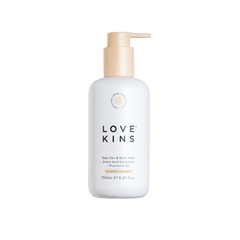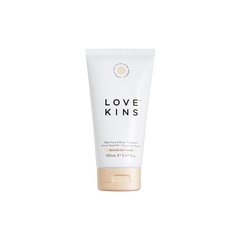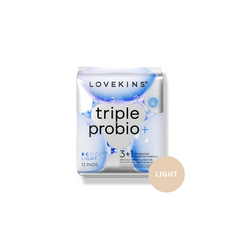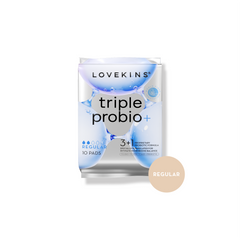Sophia Power, BHScNutMed
Have you been diagnosed with endometriosis? It can feel overwhelming, but with new research comes new insights.
Endometriosis affects 1 in 9 Australian women, girls and people assigned female at birth (AFAB).1 With a diagnosis taking an average of 6.5 years to diagnose, many are left to wonder if the symptoms are just “normal” and if they’re fated to live out the rest of their menstruating days in discomfort. However, with more of a focus on the disease and an increase in research funding, researchers are consistently turning up new understandings of the disease and how to better manage the symptoms.
If you’ve already been diagnosed with endometriosis or you’re experiencing symptoms of the condition, keep scrolling to learn more about the causes, treatment options and management for endometriosis.
What is endometriosis?
Endometriosis is a gynaecological disorder wherein the endometrial tissue grows outside of the uterus. The tissue is commonly found in the peritoneal cavity, ovaries, and intestines - but it has also been found elsewhere such as the bladder and, in rare cases, the brain.2
Everyone’s experiences are different and although some people may have extreme symptoms, others experience minimal issues. The symptoms don’t reflect how severe the actual endometriosis adhesions are - while some people can have minimal pain with severe endometrial tissue the inverse can also be the case.
Symptoms can include:
- Extreme period pain
- Pain during sex
- Pelvic pain outside of menstruation
- Pain upon emptying bowels
- Nausea and vomiting
- Infertility or subfertility
- Heavy bleeding and clotting
What causes endometriosis?
While there are many theories as to why endometriosis develops, it appears that there isn’t one single cause. In fact, it’s really what is referred to as a “multifactorial disease” - this is part of what makes it difficult to treat and understand.
Some of the main contributors to endometriosis development include:
Immunity
Although it’s not technically classified as an autoimmune condition, some argue that endometriosis should be treated as such because it displays many of the same hallmarks. These include that inflammation is a core part of the disease, as well as a response of the immune system.
Endometriosis has also been found to potentially increase the risk of developing other autoimmune conditions.3
Gut bacteria LPS
An imbalance in the microbiome of the gut and/or the vagina (yes, the vagina has its own microbiome!) is one potential explanation for endometriosis. Lipopolysaccharides, or LPS for short, are a type of toxin produced by gram-negative bacteria in the gut. Exposure to LPS can upset specific immune cells known as macrophages, causing immune involvement and inflammation.4
To add further weight to this particular theory, recent studies have discovered that the bacteria E. Coli and Shigella are both found in the gut flora of endometriosis patients, while gut and serum levels of LPS are also increased.5
Oestrogen dominance
A higher production of the female sex hormone oestrogen, coupled with poor metabolism and excretion of hormones via the gut and liver can lead to oestrogen dominance. There are a number of reasons why oestrogen can be higher, including environmental exposure to xeno-oestrogens such as bisphenol-A (BPA), genetic factors and how well your liver metabolises hormones.
When oestrogen is high, progesterone levels are suppressed - however, no one hormone is “good” or “bad”, it’s about the harmonious balance between the two. Progesterone helps prevent overgrowth of the endometrial lining which is why increasing progesterone levels is an important focus of endometriosis treatment.6
Genetics
While it’s thought to contribute to endometriosis development, genetics is only one small factor. One study of 400 patients undergoing surgery for endometriosis found that 10.2% had a first-degree relative with the disease - compared to just 0.7% in the control group.7
There is no endometriosis “gene” (at least not that has been discovered yet). However, there are other genes that impact things like hormones, detoxification, and other genetic avenues that contribute to the development of the condition.
Environmental factors
Xeno-oestrogens are environmental chemicals that mimic oestrogen and contribute to endometriosis development.8 They are found in many plastics, cosmetics and fragrances, as well as certain pesticides. Avoid storing food in plastic containers, drinking from plastic bottles and using personal care products with ingredients such as phthalates, parabens and oxybenzone.
Click here for a full list of xeno-oestrogens commonly found in personal care products.
Treatment options for endometriosis
After an initial consultation with a GP, you may be referred to a specialist for further testing such as a pelvic ultrasound and, if necessary, treatment.
The most common types of treatment available include:
Surgery
Laparoscopy is still the gold standard of treatment for endometriosis. This procedure involves the removal of endometrial lesions via keyhole surgery.
Medication
Many of the medications available for endometriosis target the hormonal aspect of the disease.2 Options include the combined oral contraceptive pill or the progestin-only “mini-pill”.
Mirena IUD
The Mirena intrauterine device or IUD is a small device that is inserted into the uterus by your GP or specialist. This has become a popular method of both birth control and endometriosis management as the synthetic hormone is released locally and may therefore have fewer side effects. An IUD will also provide up to 5 years of continuous birth control.9
What is the best diet for endometriosis?
You’ve probably heard a lot about diet and endometriosis but unfortunately, there’s no miracle diet. While plenty of people get great results by removing certain foods such as eggs, gluten and/or dairy to manage their symptoms, this may not work for everyone. If in doubt, ask for guidance from a dietician or nutritionist.
Dietary considerations:
The Mediterranean diet
Why is the Mediterranean diet so ideal for endometriosis? At its core, it’s a highly anti-inflammatory, antioxidant-rich array of whole foods that also happen to support gut health and provide all the nutrients for a healthy immune system.10
Think more colourful fruit and vegetables, healthy fats from nuts, avocado and olive oil, protein from legumes, fish and lean meats and plenty of herbs and spices to accompany them.
This kind of diet is high in antioxidants, omega-3 fats, prebiotic fibre and essential vitamins and minerals that are shown to reduce inflammation and the risk of endometriosis development or worsening.5
Low FODMAP diet
A low-FODMAP diet can also be helpful for some people with endometriosis, mainly when there are more gut-related symptoms. Many foods contain a range of carbohydrates that can cause gut distress to some people. The low FODMAP diet was developed by Monash University and contains foods that have little to no difficult-to-digest carbohydrates.
It can be difficult to follow and is not meant as a permanent solution, so speak to a dietician or nutritionist specialising in low-FODMAP diets, gut issues and endometriosis for further support.
Cut back on these foods
Reducing or removing alcohol can also be of great benefit as alcohol is a toxin that puts the liver under undue pressure and creates inflammation.
While there’s no need to cut it out completely, keep an eye on sugar intake and try to get more of your sugar from whole food sources such as fruit and a small amount of dates, honey or maple syrup.
Pain management for endometriosis
Pain medications
The most common kind of pain relief for endometriosis is a class of drugs known as non-steroidal anti-inflammatory drugs (NSAIDs). NSAIDs block the inflammation cascade that is known to be involved in endometriosis and period pain.
Acupuncture
The ancient traditional Chinese medicine treatment of acupuncture has been used to safely and effectively treat pain conditions for thousands of years. The practice involves inserting needles into specific acupoints associated with pain (this can change depending on the cause).
A recent randomised, placebo-controlled trial found that treatment with acupuncture for 12 weeks resulted in a significant reduction in dysmenorrhoea (painful period) scores, as well as reducing duration of pain.11
TENS machine
Trans-cutaneous Electrical Nerve Stimulation (TENS) is a device that has become so affordable and easily transportable that you can wear it everywhere. This makes it a really accessible form of drug-free pain relief.
TENS works by blocking pain signals to the brain and although the results vary among individuals, a small handful of studies have so far proved to be promising.12,13
Supplements
There’s an endless list of natural supplements that people swear by for endometriosis pain, but here is just a handful of evidence-based anti-inflammatory supplements that are known to be beneficial:
- Magnesium
- Eases muscle tension and cramping which can be useful in period cramps
- Omega-3 EPA and DHA
- Reduces inflammation by preventing the inflammatory cascade that occurs in endometriosis pain
- Turmeric or “curcumin”
- Reduces inflammation and inhibits oestrogen production.14
- Probiotics
- Help correct the gut bacteria imbalance associated with endometriosis. Lactobacillus gasseri has been shown to reduce inflammation and development of ectopic endometrial cells.5
If you or someone you care about has been diagnosed with endometriosis, it can feel overwhelming. A diagnosis can begin the journey of further surgeries and trial and error on finding the right mix of medications, pain relief, and complementary medicine. Getting a handle on the fundamentals of endometriosis can go a long way in helping you to make empowered decisions.
References:
- Endometriosis Australia. What is Endometriosis? Accessed February 2023 from https://www.endometriosisaustralia.org/
- Garcia-Gomez, E., Vasquez-Martinez, E.R., Reyes-Mayoral, C., Cruz-Orozco, O.P., Camacho-Arrayo, I., et al. (2020). Regulation of inflammation pathways and inflammasome by sex steroid hormones in endometriosis. Front. Endocrinol (Lausanne), 2019(10): 935. https://www.ncbi.nlm.nih.gov/pmc/articles/PMC7000463/
- Shigesi, N., Kvaskoff, M., Kirtley, S., Feng, Q., Fang, H., Knight, J.C., et al. (2019). The association between endometriosis and autoimmune diseases: a systematic review and analysis. Hum Reprod Update, 25(4): 486-503. https://www.ncbi.nlm.nih.gov/pmc/articles/PMC6601386/
- Leonardi, M., Hicks, C., El-Assaad, F., El-Omar, E. & Condous, G. (2019). Endometriosis and the microbiome: a systematic review. British Journal of Obstetrics and Gynaecology, 127(2):239-249. https://obgyn.onlinelibrary.wiley.com/doi/abs/10.1111/1471-0528.15916
- Qin, R., Tian, G., Liu, J. & Cao, L. (2022). The gut microbiota and endometriosis: From pathogenesis to diagnosis and treatment. Front. Cell. Microbiol., 12. https://www.frontiersin.org/articles/10.3389/fcimb.2022.1069557/full#B63
- Gezer, A. & Oral, E. (2016). Progestin therapy in endometriosis. Women’s Health, 11(5): 643-652. https://journals.sagepub.com/doi/10.2217/whe.15.42
- Vassilopoulou, L, Matalliotakis, M., Zervou, M.I., Matalliotaki, C., Krithinakis, K., et al. (2019). Defining the genetic profile of endometriosis. Exp Ther Med, 17(5):3267-3281. https://www.ncbi.nlm.nih.gov/pmc/articles/PMC6447774/
- Stephens, V.R., Rumph, J.T., Ameli, S., Bruner-Tran, K.L., Osteen, K.G. (2022). The potential relationship between environmental endocrine disruptor exposure and the development of endometriosis and adenomyosis. Front. Physiol, 12. https://www.frontiersin.org/articles/10.3389/fphys.2021.807685/full
- Endometriosis.org. Mirena. Updated April 2011, accessed February 2023 from https://endometriosis.org/treatments/mirena/
- Nirgianakis, K., Egger, K., Kalaitzopoulos, D.R., Lanz, S., Bally, L., et al. (2022). Effectiveness of dietary interventions in the treatment of endometriosis: a systematic review. Reproductive Sciences, 29: 26-42. https://link.springer.com/article/10.1007/s43032-020-00418-w
- Li, P.S., Peng, X.M., Niu, X.X., Xu, L., Hung-Yu, E., et al. (2023). Efficacy of acupuncture for endometriosis-associated pain: A multicenter randomized single-blind placebo-controlled trial. Fertility and Sterility, 119(2). https://www.sciencedirect.com/science/article/abs/pii/S0015028223000729
- Mira, T.A.A., Yela, D.A., Podgaec, S., Baracat, E.C. & Benetti-Pinto, C.L. (2020). Hormonal treatment isolated versus hormonal treatment associated with electrotherapy for pelvic pain control in deep endometriosis: Randomized clinical trial. Eur J Obstet Gynecol Reprod Biol, 225: 134-141. https://www.ejog.org/article/S0301-2115(20)30648-5/fulltext
- Mira, T.A.A., Giraldo, P.C., Yela, D.A., Benetti-Pinto, C.L. (2015). Effectiveness of complementary pain treatment for women with deep endometriosis through Transcutaneous Electrical Nerve Stimulation (TENS): randomized controlled trial. Eur J Obstet Gynecol Reprod Biol, 194: 1-6. https://pubmed.ncbi.nlm.nih.gov/26319650/
- Bahat, P.Y., Ayhan, I., Ozdemir, E.U., Inceboz, U. & Oral, E. (2022). Dietary supplements for treatment of endometriosis: A review. Acta Biomed, 93(1): e2022159. https://www.ncbi.nlm.nih.gov/pmc/articles/PMC8972862/













